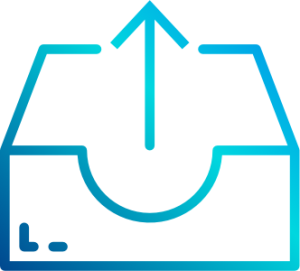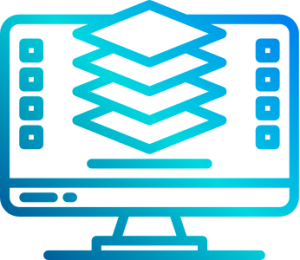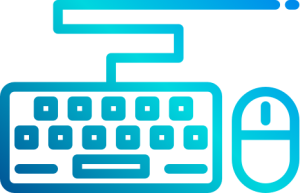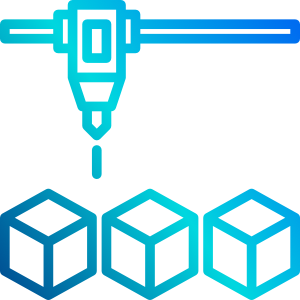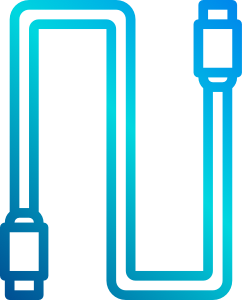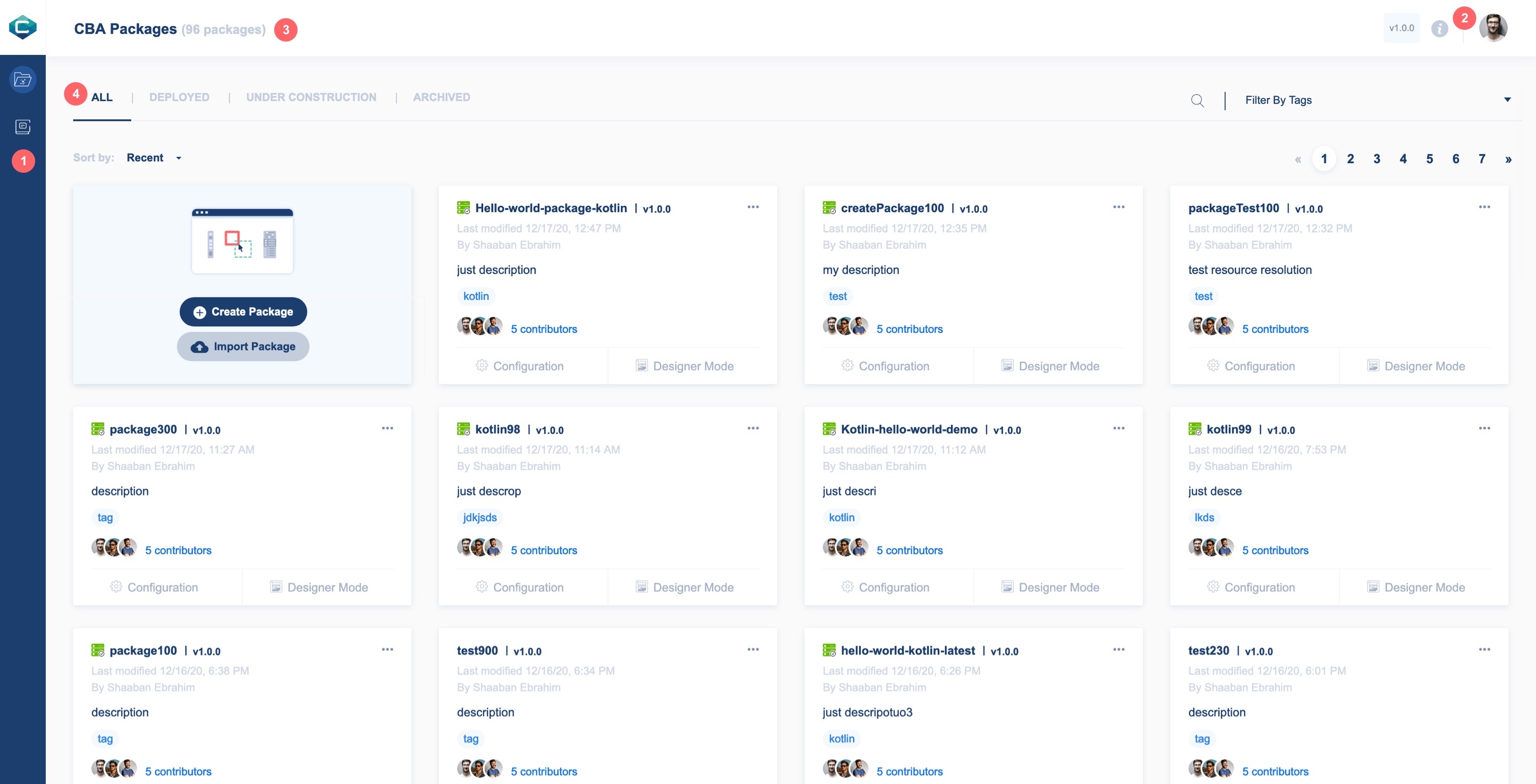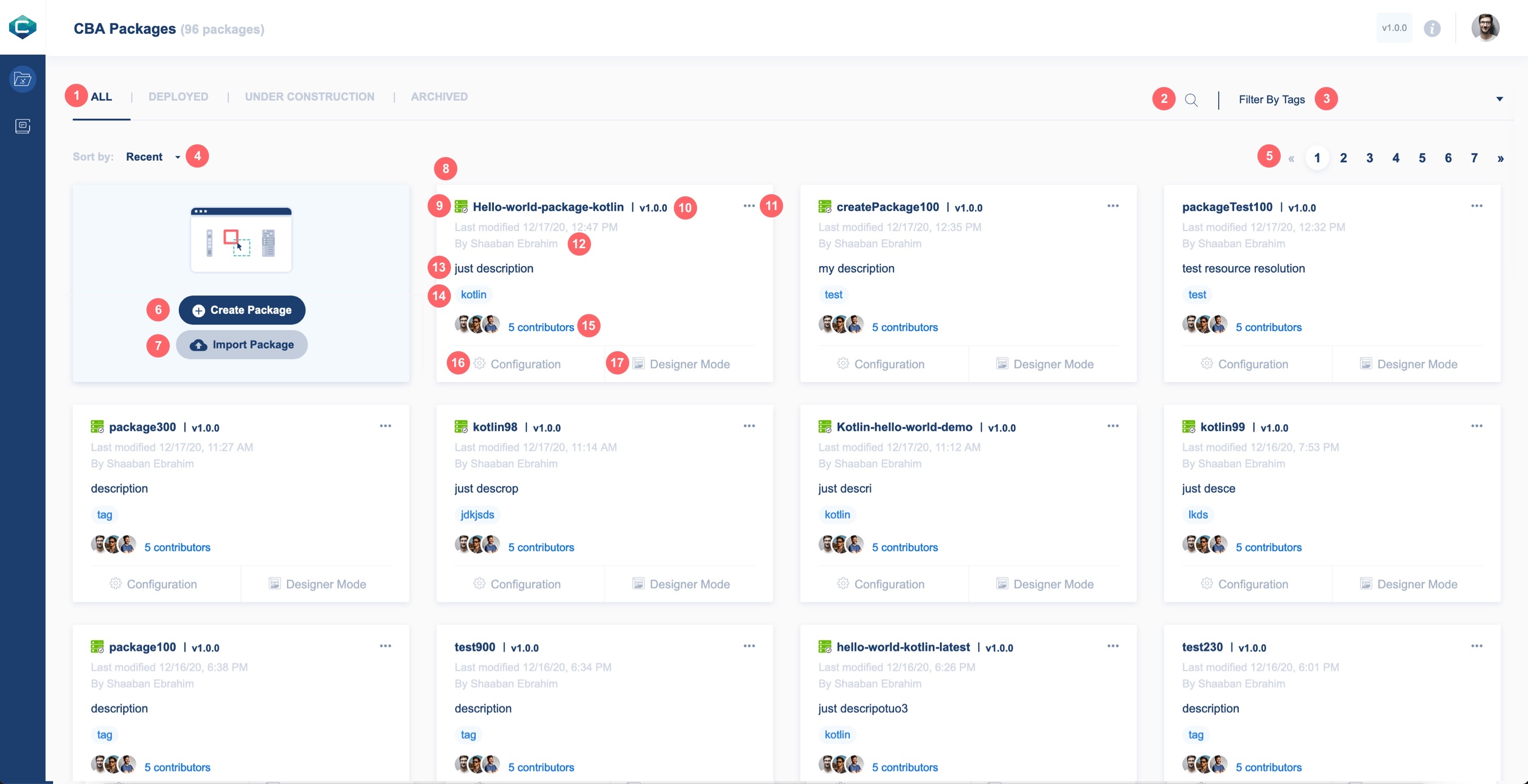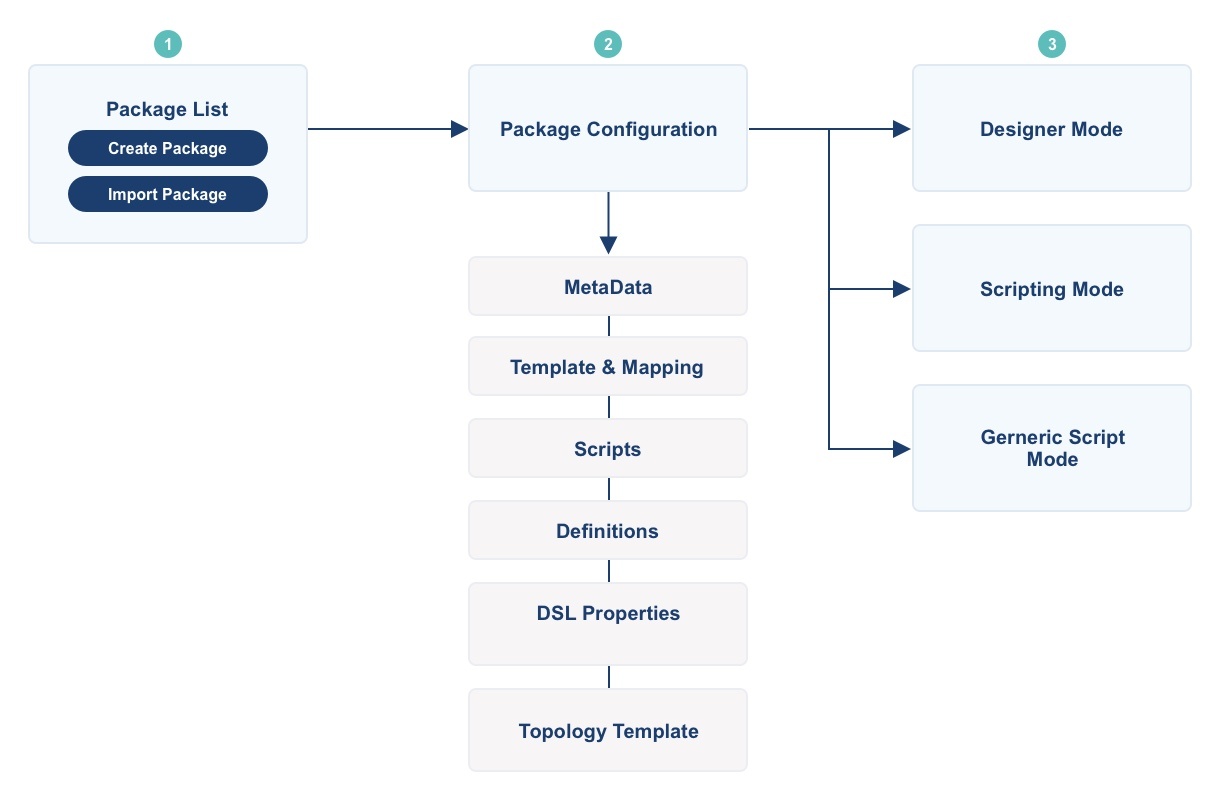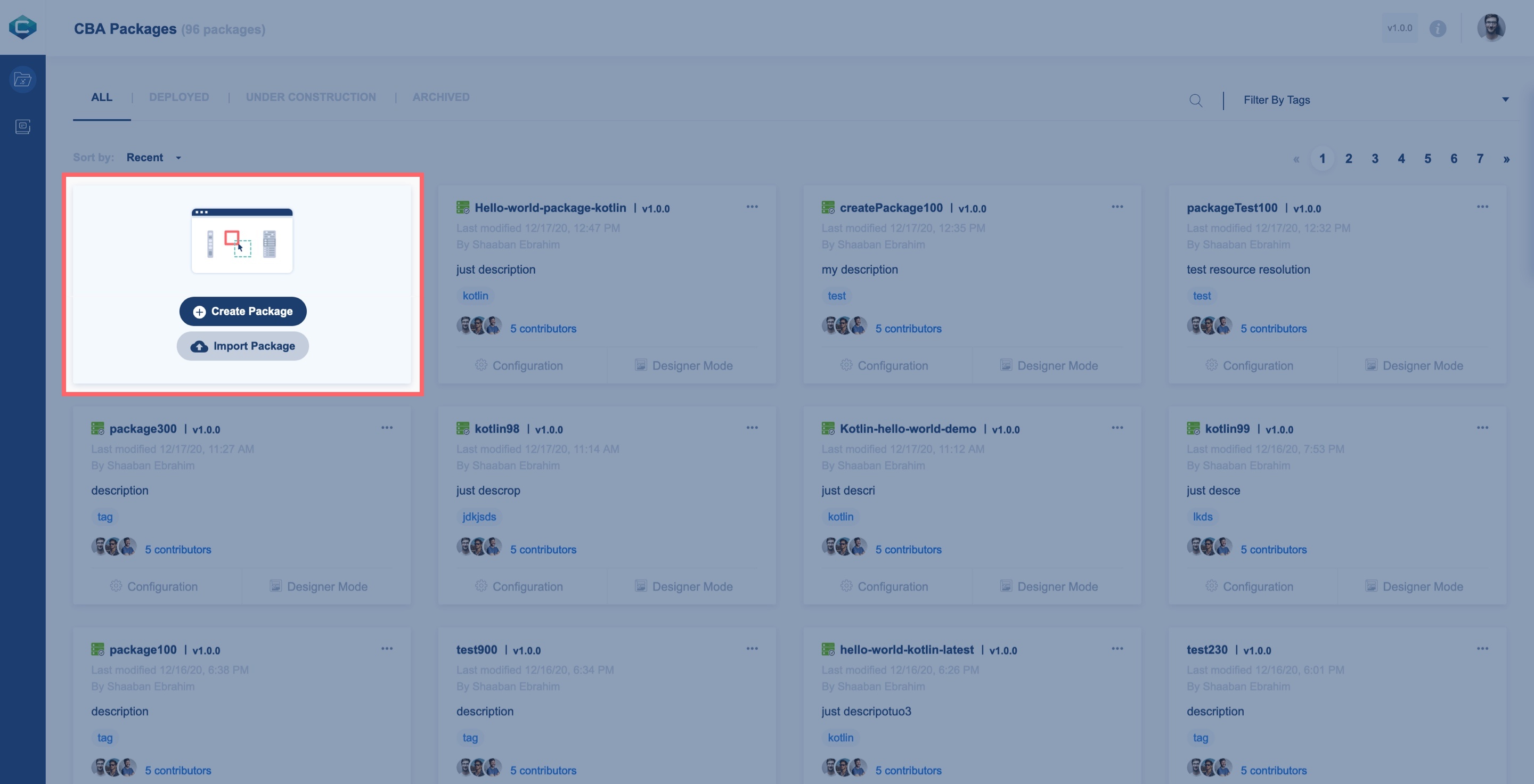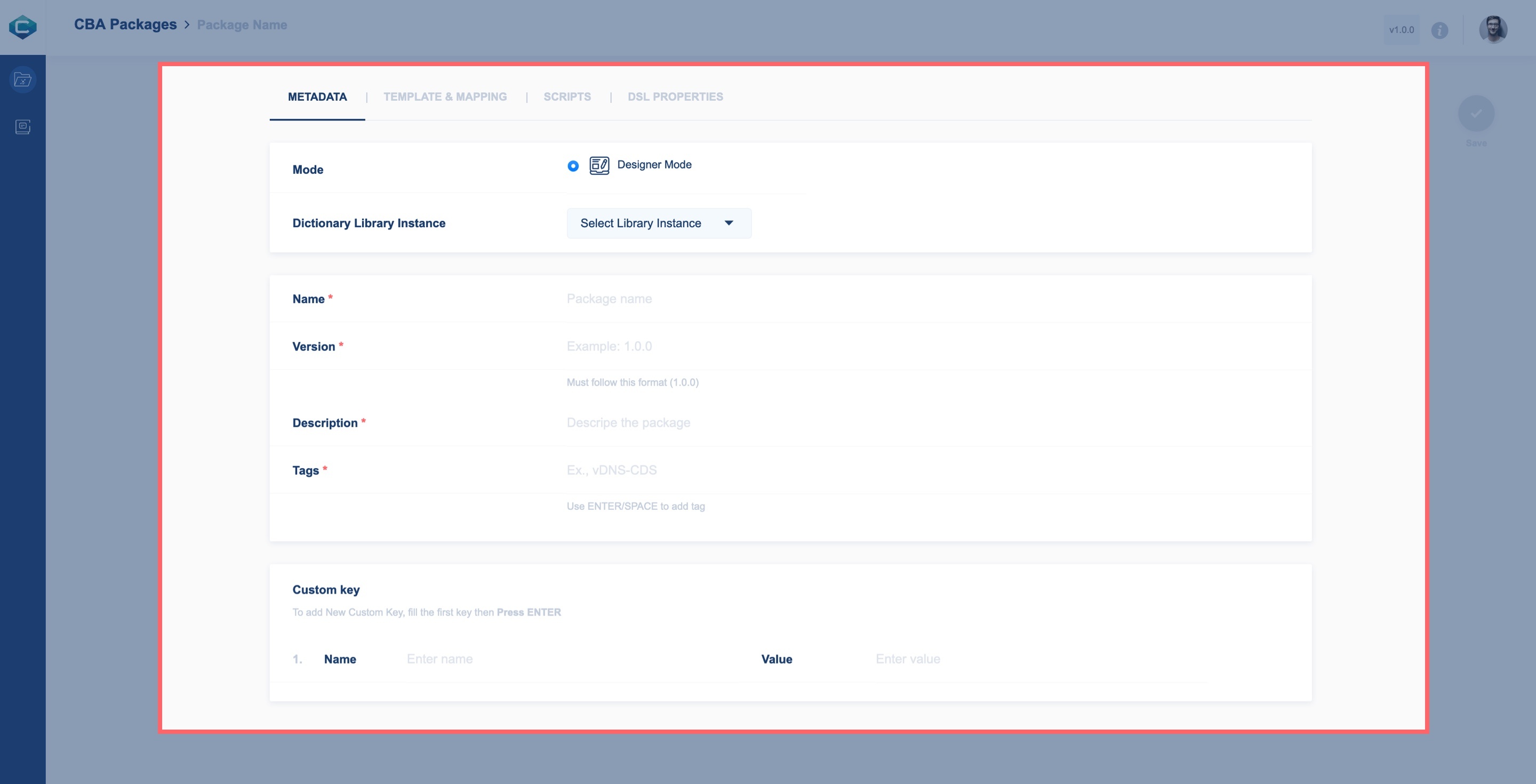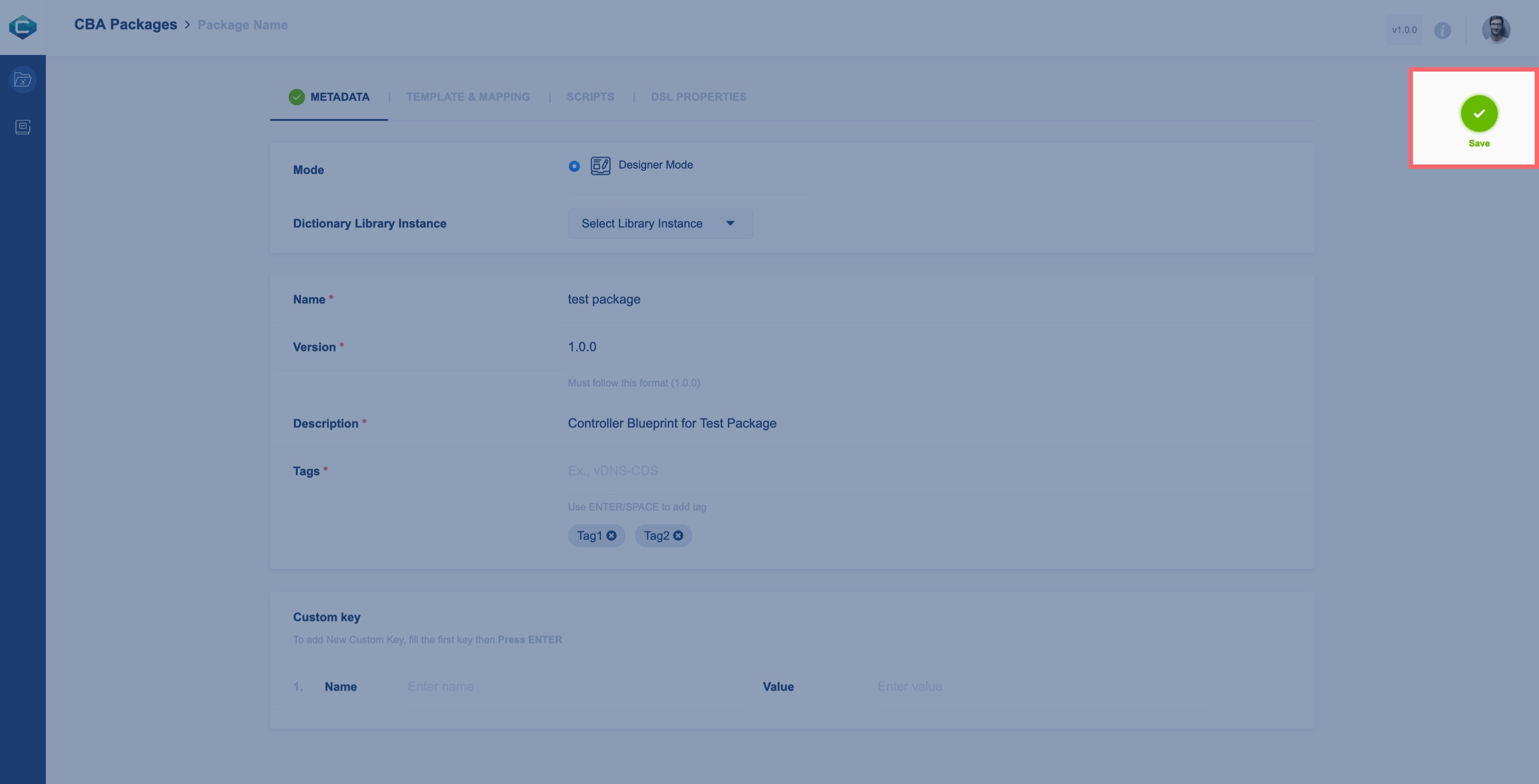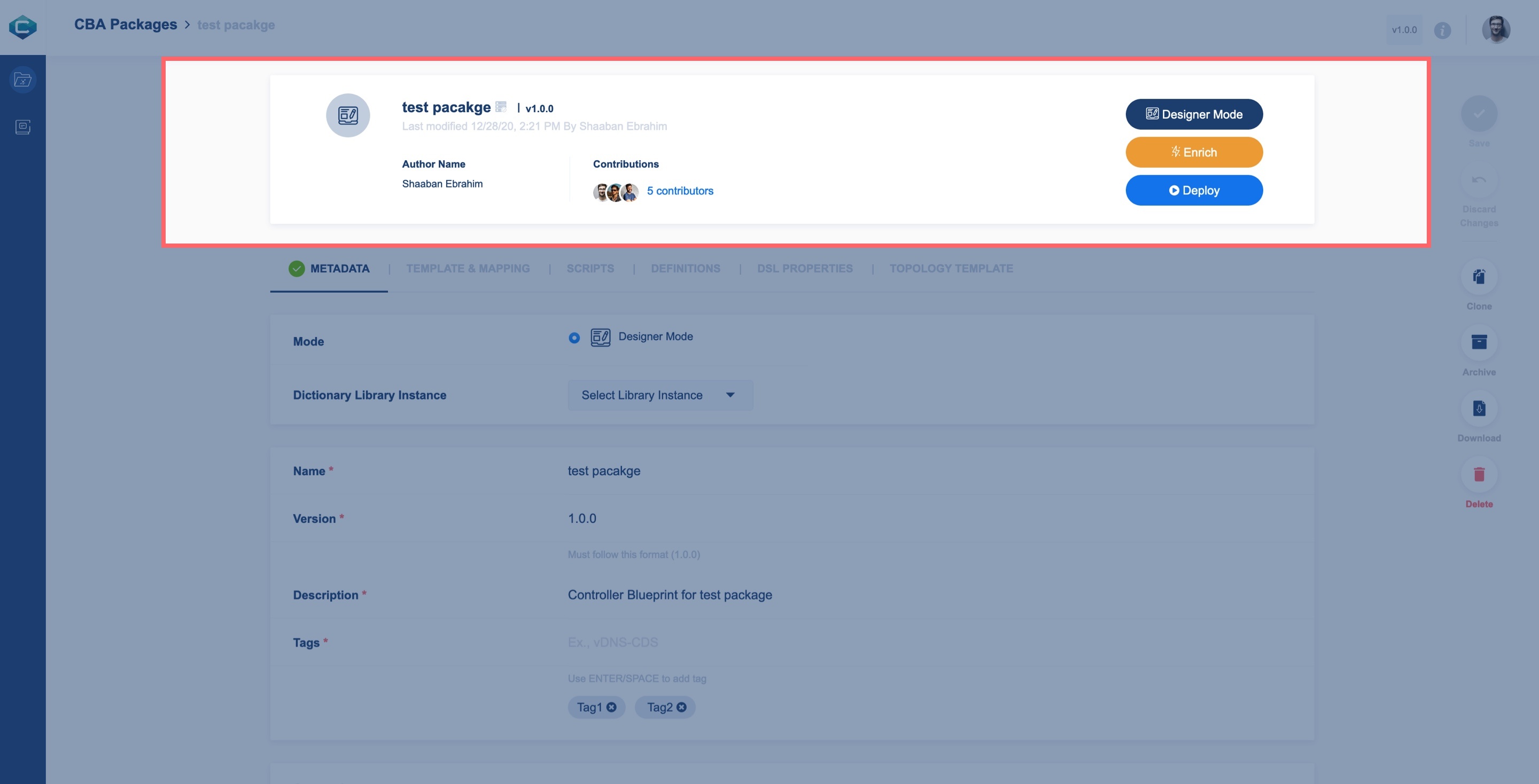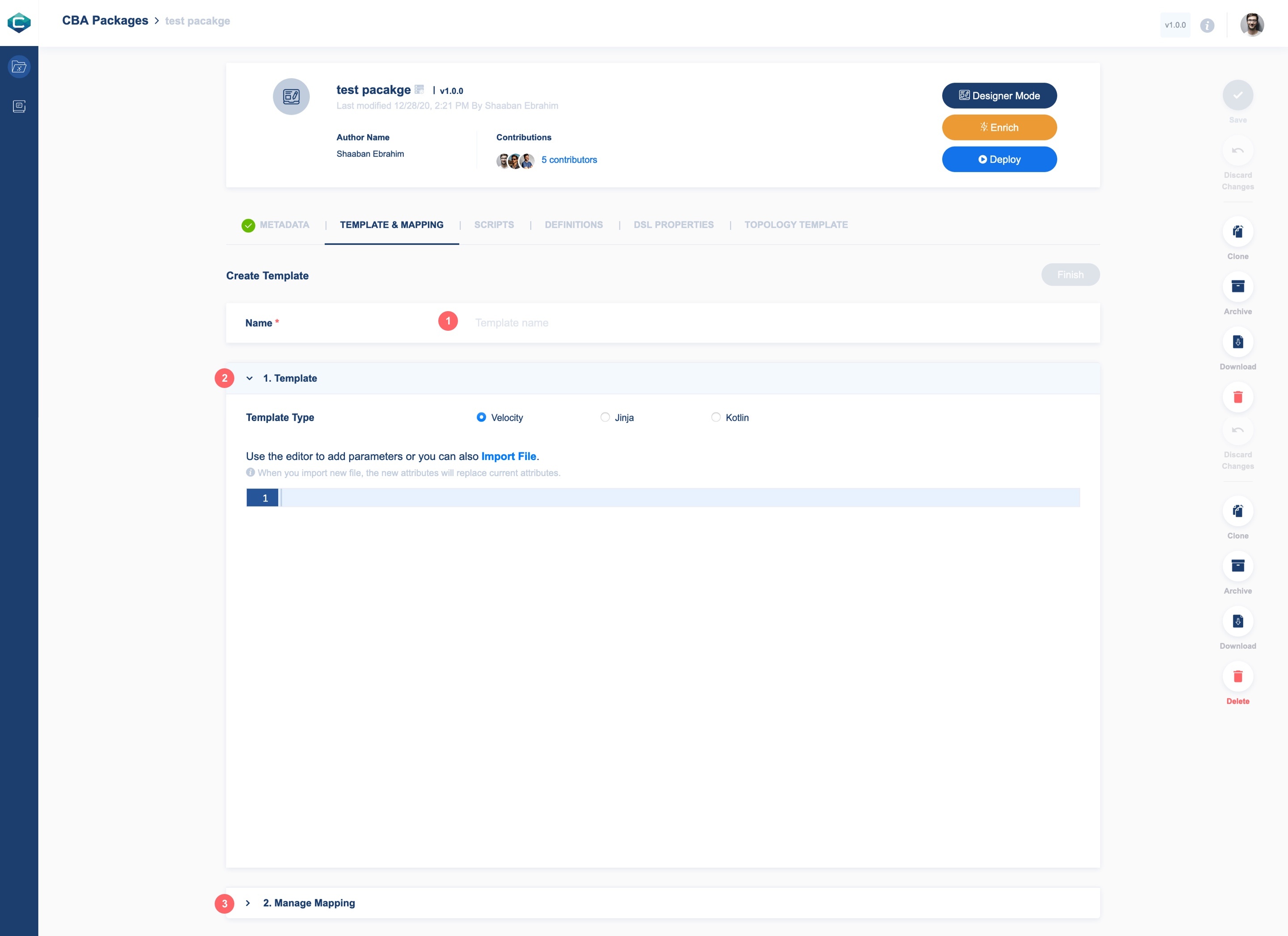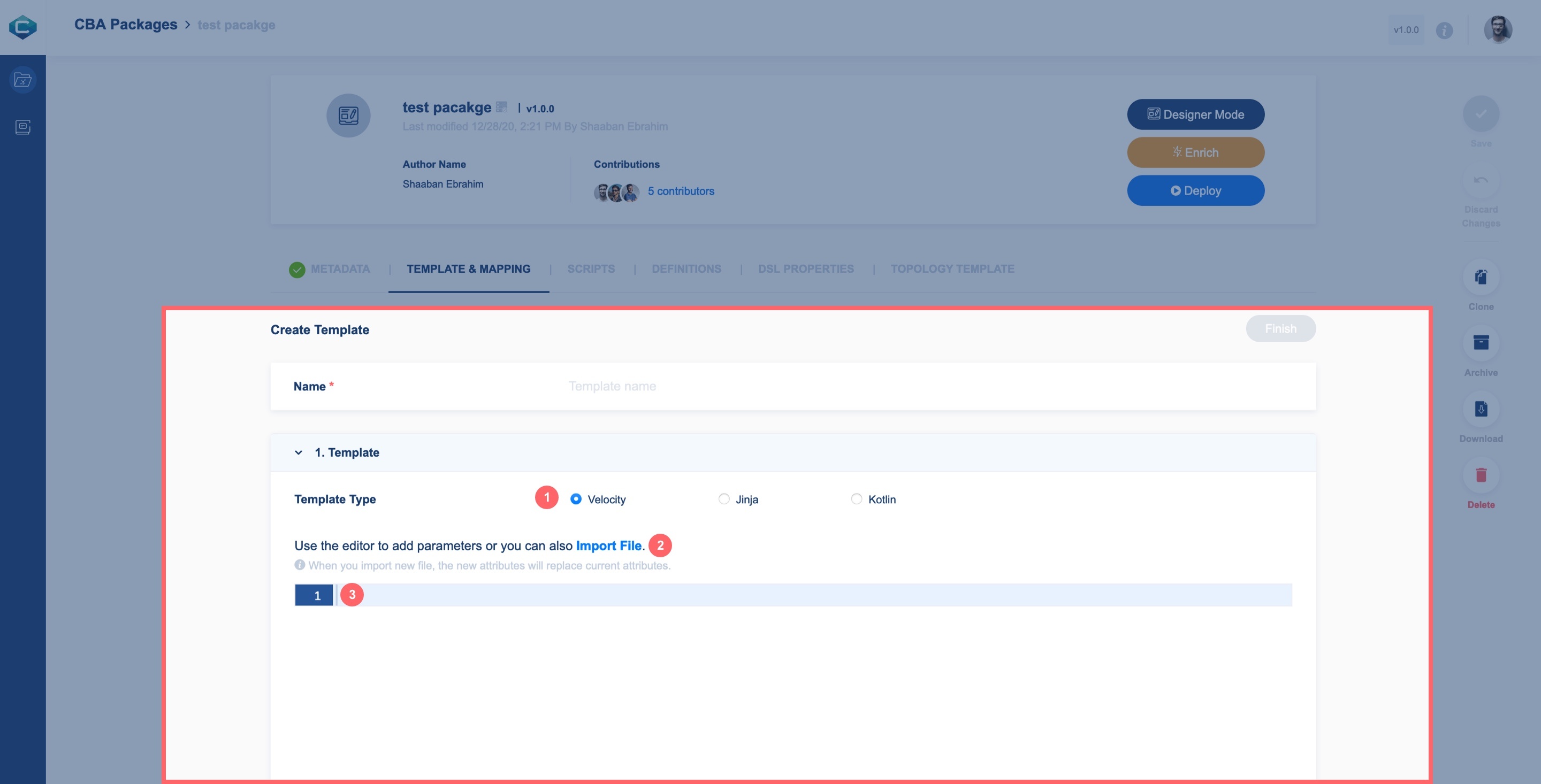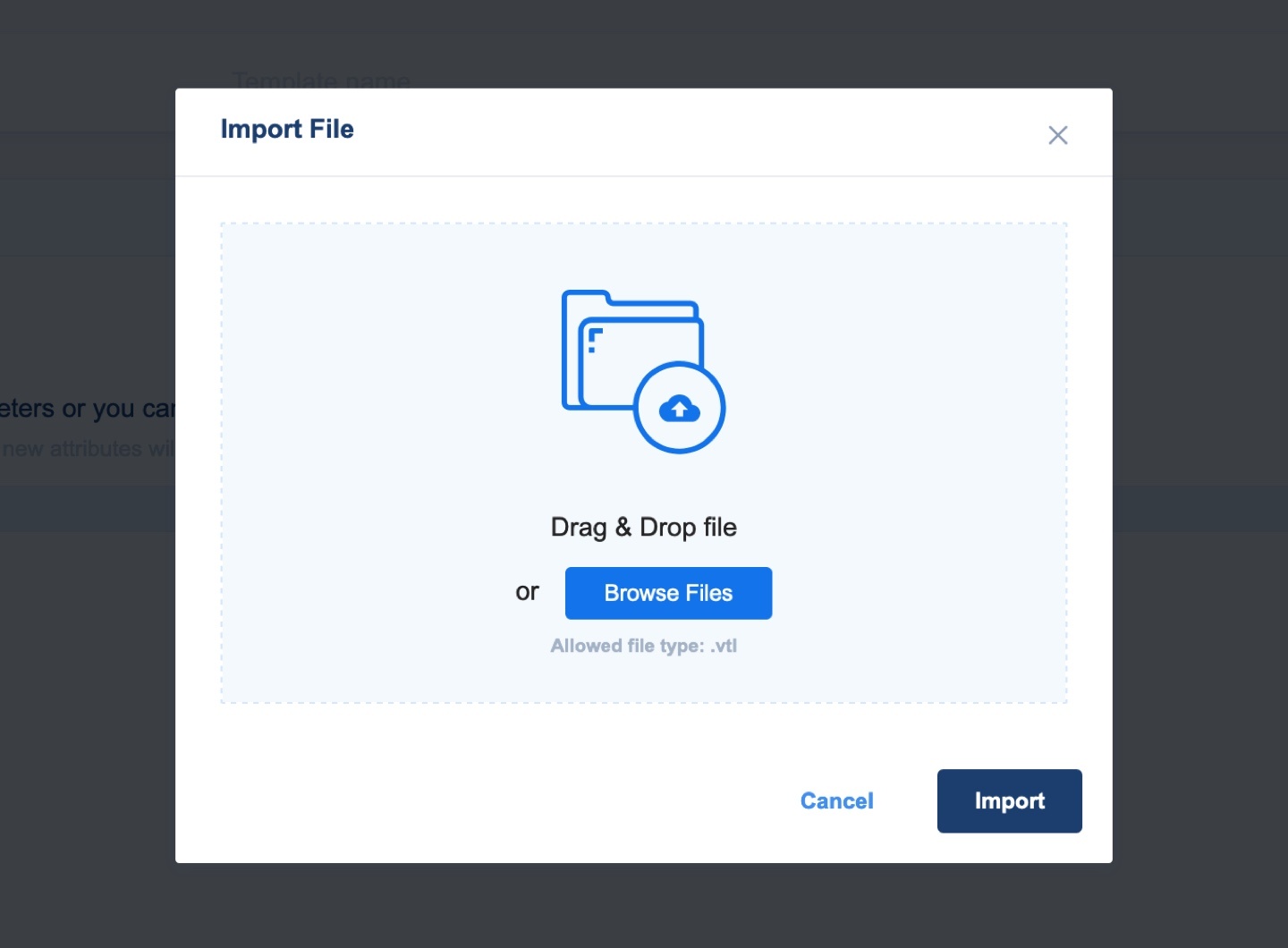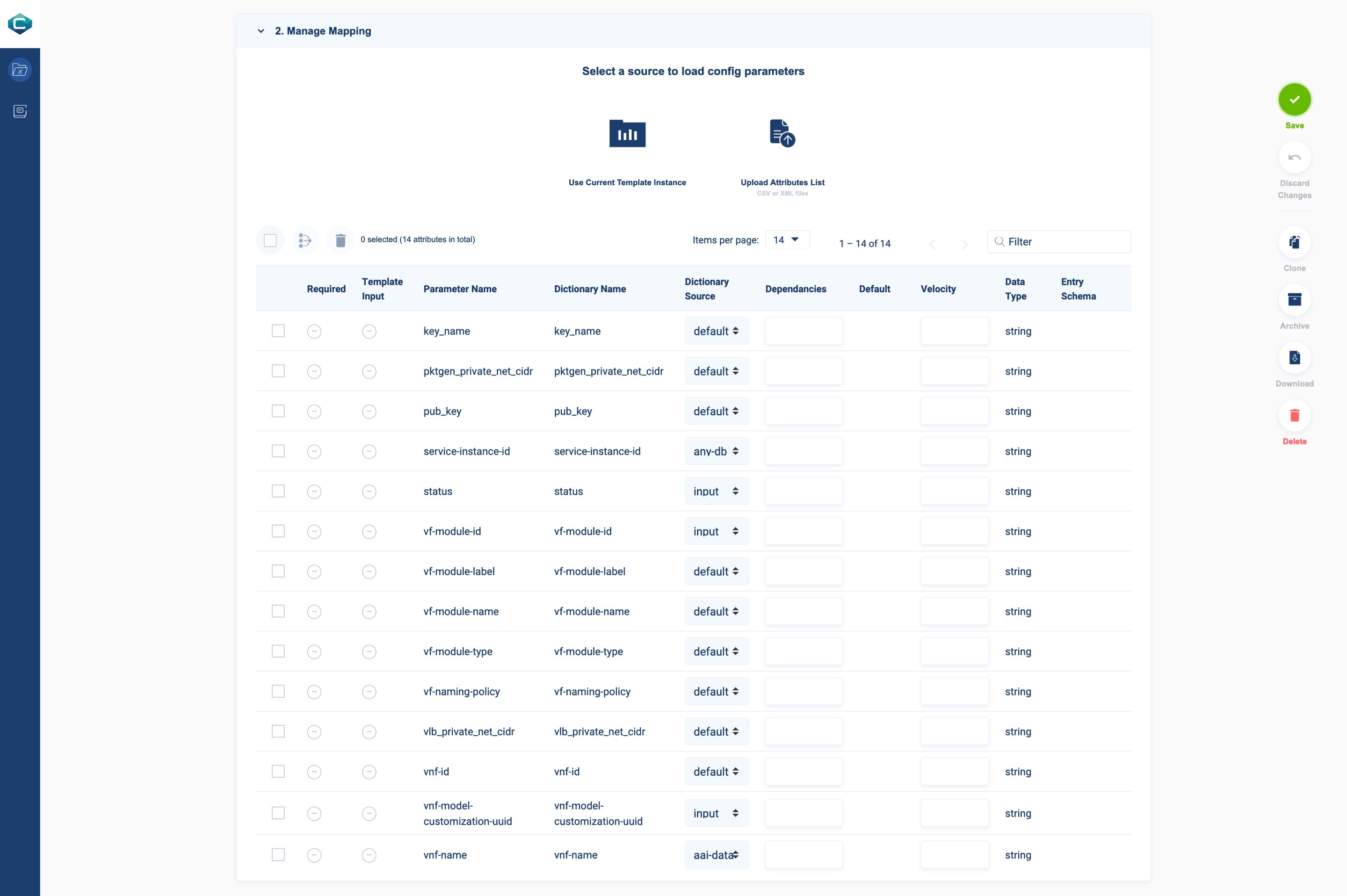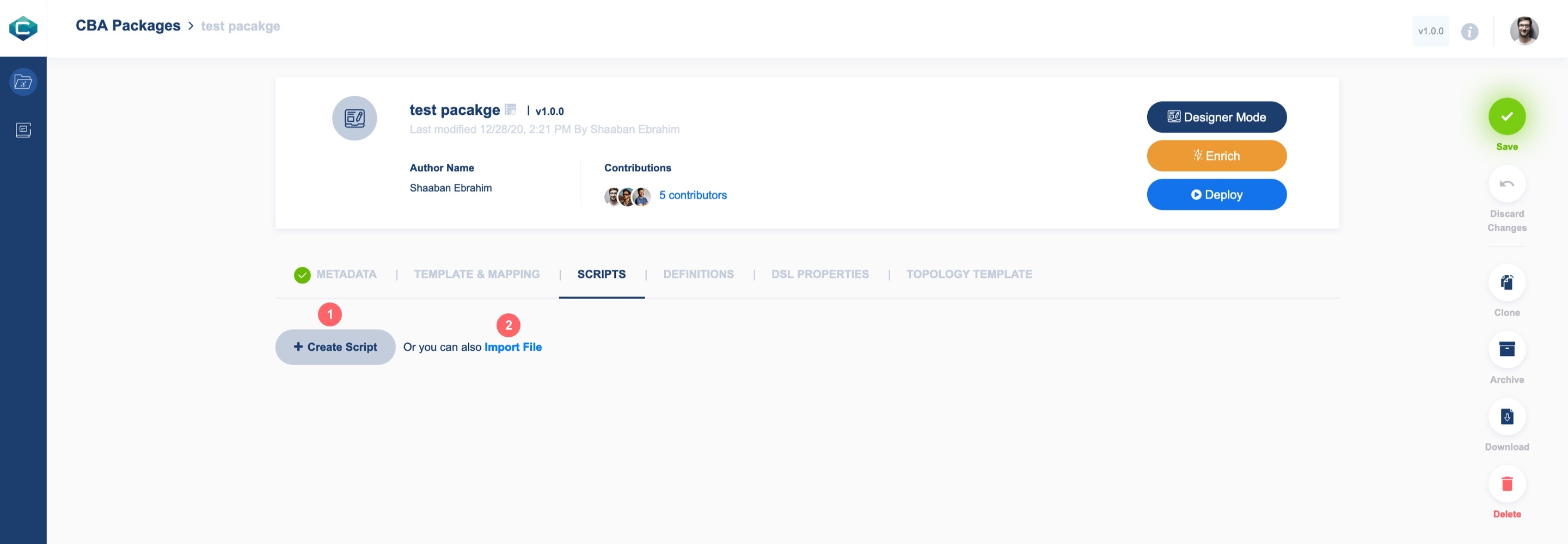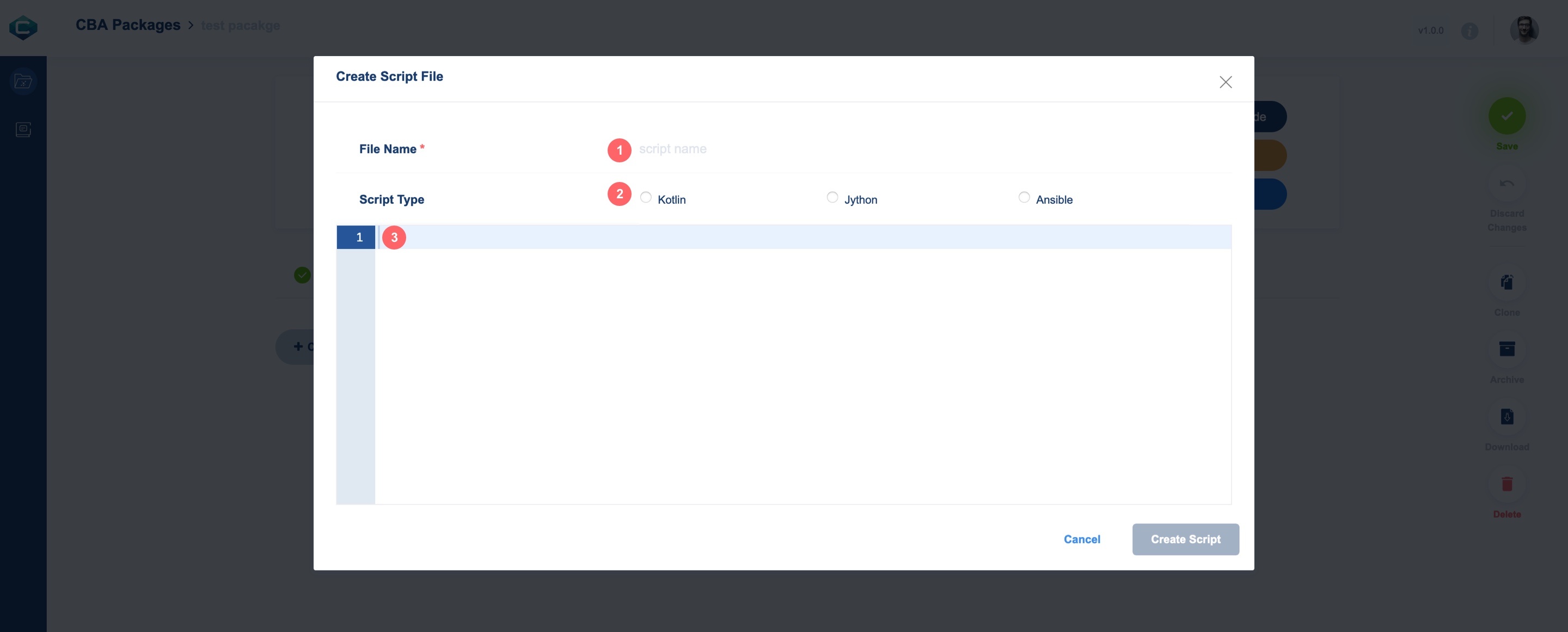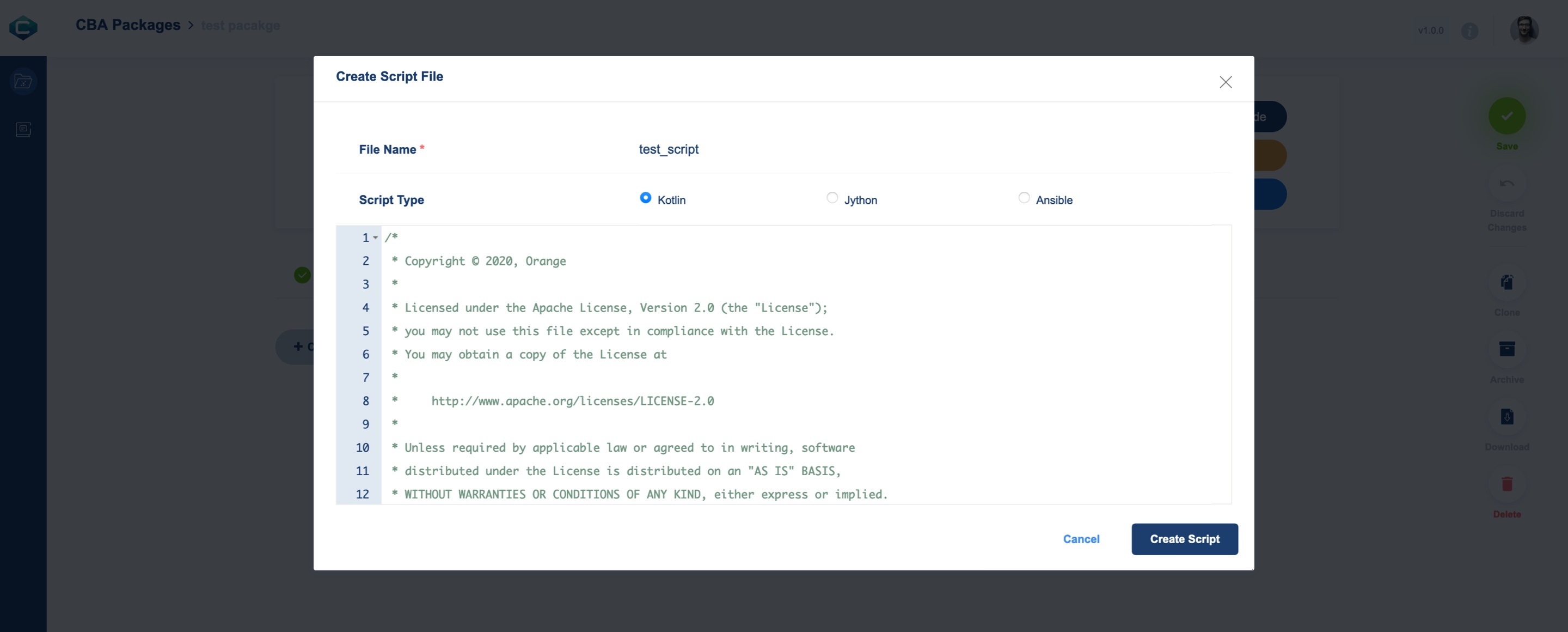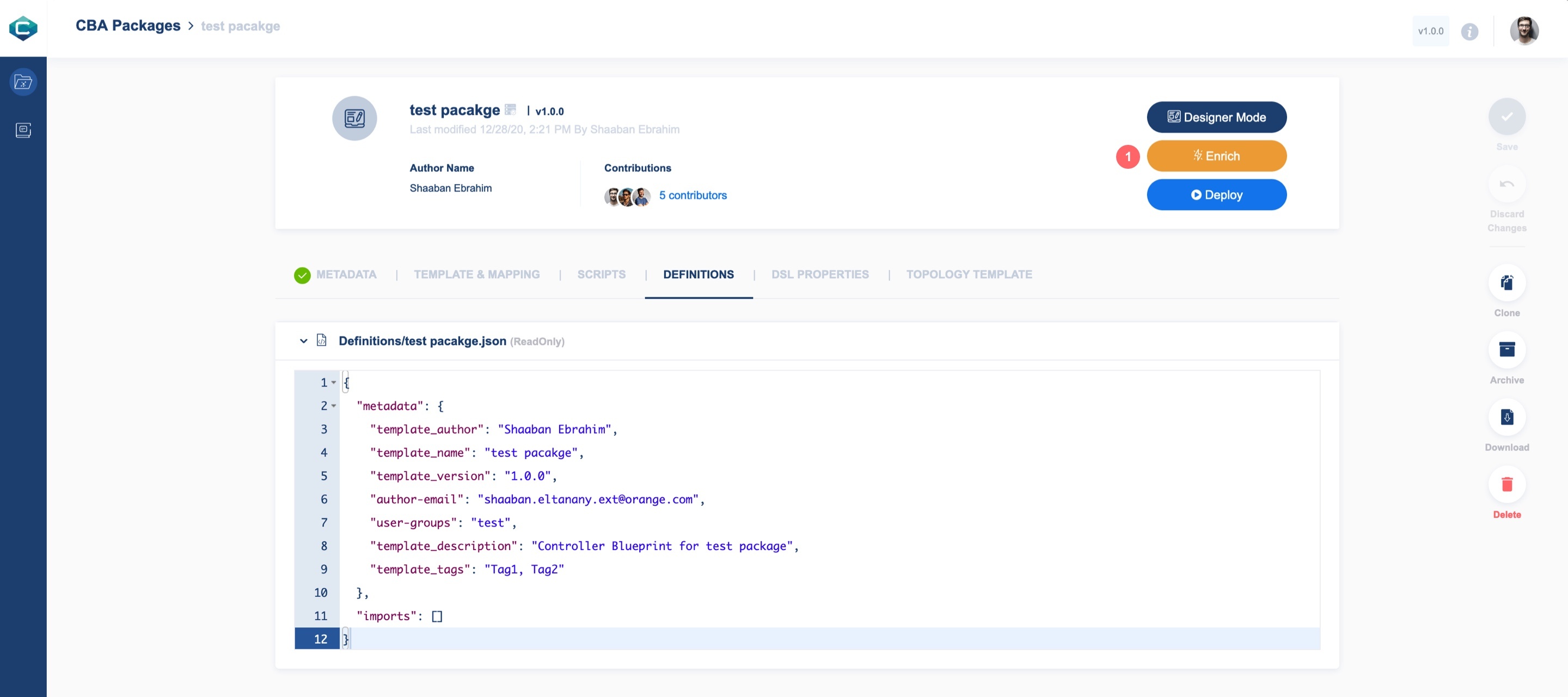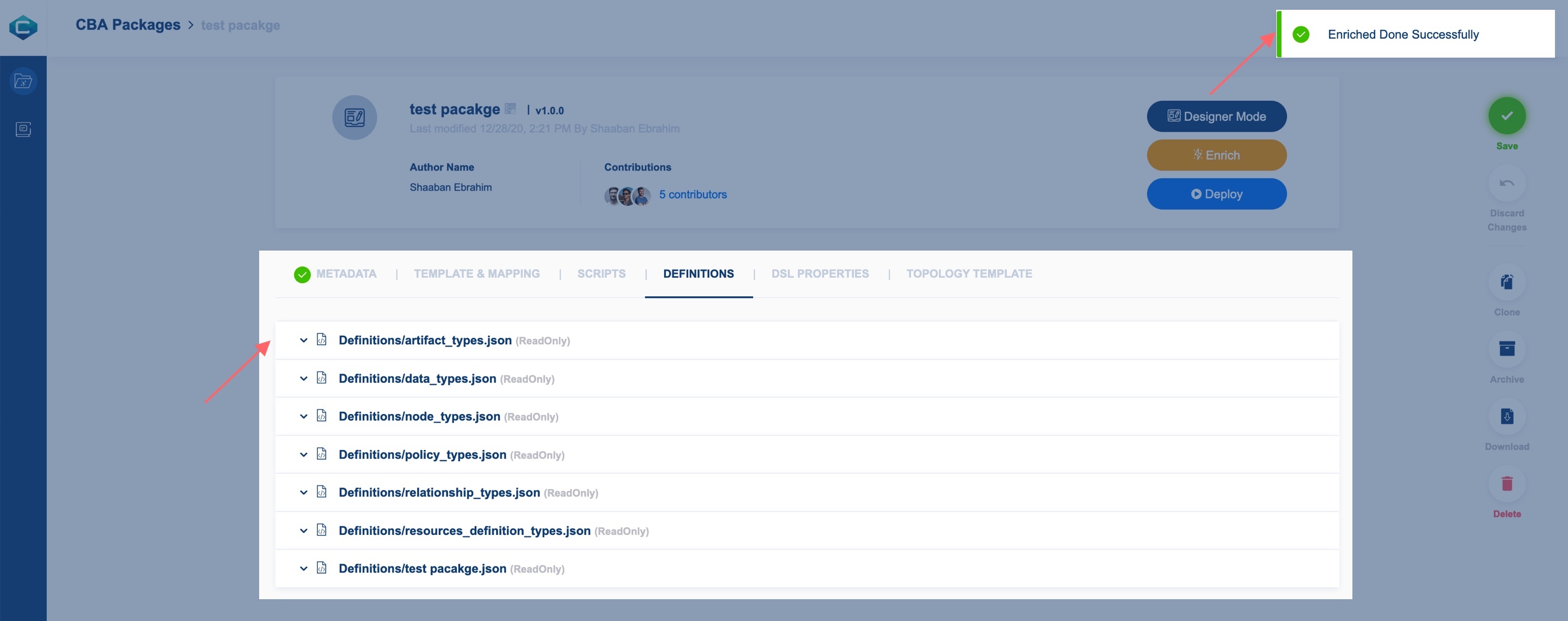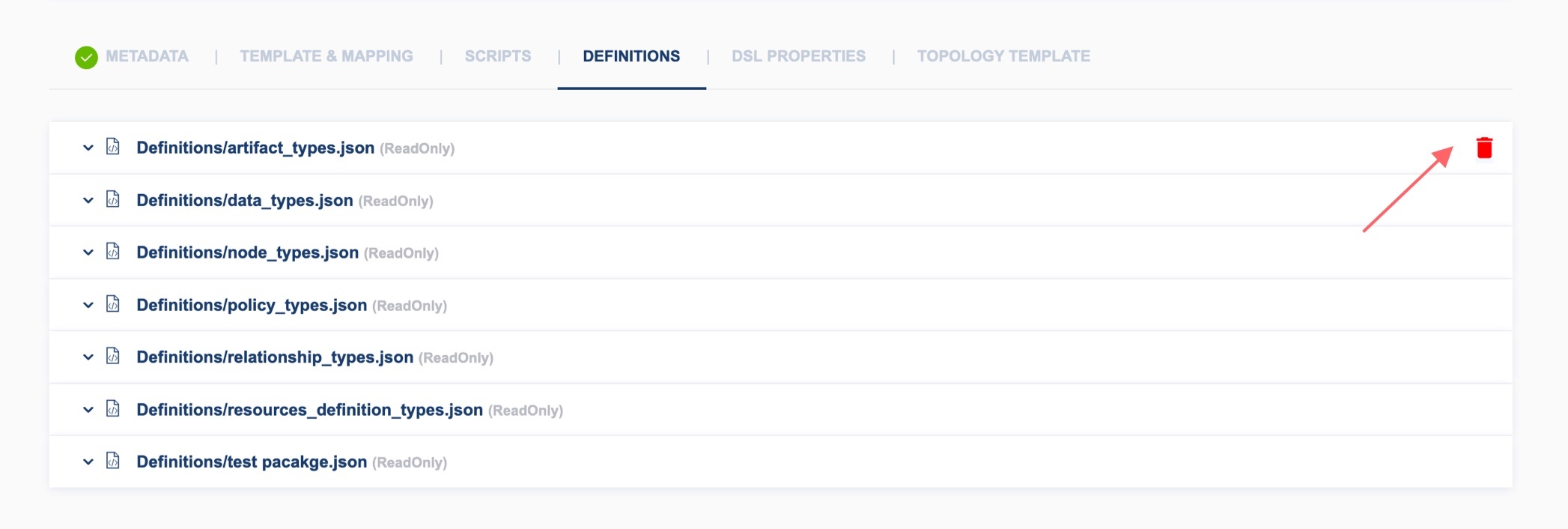Getting Started
This is your CDS Designer UI guide. No matter how experienced you are or what you want to achieve, it should cover everything you need to know — from navigating the interface to making the most of different features.
What is CDS Designer UI?
CDS Designer UI is a framework to automate the resolution of resources for instantiation and any config provisioning operation, such as day0, day1, or day2 configuration.
CDS has both design-time and run-time activities; during design time, Designer can define what actions are required for a given service, along with anything comprising the action. The design produces a CBA Package. Its content is driven from a catalog of reusable data dictionary and component, delivering a reusable and simplified self-service experience.
CDS modeling is mainly based on the TOSCA standard, using JSON as a representation.
What's new?
Create full CBA packages from built-in forms without programming
Import old packages for edit and collaboration
Create sophisticated package workflows in a no-code graphical designer
Customizable CBA Package actions
Easily create and manage lists of data via interface (Data Dictionary, controller catalog, and config management)
Integration between CDS UI and SDC Services
Overview of CDS Interface
Full CDS UI screens are available in InVision
- CDS main menu: Access all CDS module list including Packages, Data Dictionary, Controller Catalog, etc.
- Profile: Access user profile information
- Module Title: See the current module name and the total number of items in the module list
- Module list: View all active items in module and tools for search and filtering
CBA Packages
Package List
It gives you quick access to all and most recent created/edit packages
- Module Tabs: Access All, Deployed, Under Construction, or Archived packages
- Search: Search for a package by title
- Filter: Filter packages by package tags
- Package Sort: Sort packages by recent or alphanumeric (name) or version
- List Pagination: navigate between package list pages
- Create Package: Create a new CBA package
- Import Package: Import other packages that are created previously on CDS Editor or Designer or created by other/current user
- Package box: It shows a brief detail of the package and gives access to some actions of the package
- Package name and version
- More menu: Access a list of actions including Clone, Archive, Download, and Delete
- Last modified: Shows user name and date and time of last modifications made in the package
- Package Description
- Collaborators: See who's collaborating to edit in the package
- Configuration button: Go directly to package configuration
- Designer Mode: It indicates package mode (Designer, Scripting, and Generic scripting) and by clicking on it, it will load to mode screen
Create a New CBA Package
User Flow
Create a New Package
You can create a new CBA Package by creating a new custom package or by import package file that is already created before.
Create/Import Package
You can’t create/import a CBA package that has the same name and version of an existing package. Packages can be in the same name but in different version number (ex., Package one v1.0.0 & Package one v1.0.1).
Create a New Custom CBA Package
From the Packages page, click on the Create Package button to navigate to Package Configuration
In MetaData Tab, select Package Mode, enter package Name, Version, Description and other configurations
Once you fill all required inputs, you can save this package by click Save button in the Actions menu
Package Info Box: It is in top of configurations tabs and it appears after you save a package for the first time
You can continue adding package configuration or go directly to Designer Mode screen from Package infobox
All changes will be saved when you click on Save button
To close the package configuration and go back to the Package list, navigate to the top left in breadcrumb and click the CBA Packages link or click on Packages link in the Main menu.
You can create as many templates using artifact-mapping-resource or/and artifact-template-velocity.
- Template name
- Template Section: Where you include template attributes
- Manage Mapping: Here the automapping process occurs to template attributes to refer to the data dictionary that will be used to resolve a particular resource.
Template Section
- Template Type: Template is defined by one of three templates (Velocity, Jinja, Kotlin)
- Import Template Attributes/Parameters: You can add attributes by Import attribute list file or by
- Insert Template Attributes/Parameters Manually: You can insert Attributes manually in the code editor. Code editor validates attributes according to the pre-selected template type
Import Template Attributes
After import attributes, you can add/edit/delete attributes in the code editor.
Manage Mapping Section
- Use current Template Instance: You can use attributes from Template section
- Upload Attributes List: In case you don’t have existing attributes in Template section or have different attributes, you can upload attributes list
Once you select the source of attributes, you get a confirmation of success fetching.
Then the Mapped Table appears to show the Resource Dictionary reference.
When you finish the creation process, you must click on the Finish button (1) to submit the template, or you can clear all data by click on the Clear button (2).
Allowed file type: Kotlin(kt), Python(py)
To add script file/s, you have two options:
- Enter file URL: Script file can be stored in server and you can add this script file by copy and paste file URL in URL input then press ENTER key from the keyboard
2. Import File
By adding script file/s, you can:
- Edit file: You can edit each script file from the code editor
- Delete file
Allowed file type: JSON
To define a data type that represents the schema of a specific type of data, you have two options:
- Enter file URL: Definition file can be stored in server and user can add this script file by copy and paste file URL in URL input then press ENTER key from the keyboard
2. Import File
By adding definition file/s, you can:
- Edit file: You can edit each definition file from the code editor
- Delete file
In order to populate the system information within the package, you have to provide dsl_definitions


